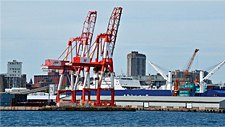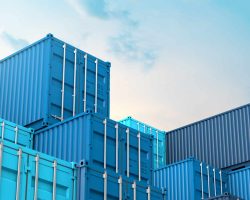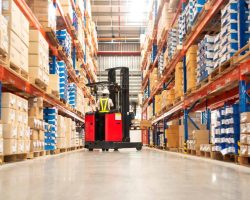 |
Port congestion, which dramatically worsened in the second half of 2021, appears to have temporarily peaked, although it’s too soon to tell whether it’s a reprieve before the next run-up, a high-level plateau, or the beginning of the end. Import growth is expected to moderate during the first half of 2022, which should give North American ports a much needed break, however, at the present time cargo volumes remain high, which is a clear sign of continued consumer demand. The other issue is that backlogs cannot be erased quickly, so while there is some hope for improvement, the outlook remains fragile at best. Given roughly 80% of all world trade ships via ocean, a return to some form of normalization is much desired by all parties engaged in international sea shipping.
The situation at the ports of Los Angeles and Long Beach, which experienced the most severe backlogs in North America last year, seems to be improving as these ports saw the lowest tally of ships waiting to berth in recent months. However, this must be viewed with cautious optimism, as the recent pattern of ships waiting off Southern California has mirrored what happened the year before. The backlog grew throughout the fall, peaked around year-end, then began declining in the first few months of the year. In 2021, the queue numbers fell from February until the third week in June, then began climbing again.
While “vessel bunching” at key ports of arrival has been reduced, the reasons for this can be deceiving. Inbound vessel volume to the U.S. and Canada remains high, as import volume continues to surge and, rather than having vessels pile up at destination ports, in some cases they are simply anchored much further offshore. In other instances, vessels are slow steaming from origin ports as they await a berthing opportunity. These actions are resulting in inconsistent shipping schedules and making vessel arrival times very difficult to predict.
Other factors, such as the recent flooding in British Columbia, affected the Port of Vancouver, which handles the highest volume of Canadian inbound cargo and is still recovering from this event. This environmental catastrophe interrupted both rail and truck service at the port and caused a major back-up of containers at its marine terminals. As well, ongoing Covid outbreaks at major ports worldwide have impacted the local labour force and resulted in cargo flow to and from these arteries being compromised, as operations are forced to temporarily shut down.
While West Coast ports have faced the brunt of issues related to high cargo volume, both U.S. and Canadian East Coast ports have seen an increase in cargo levels and backlogs, which are affecting port efficiencies. The same problems the West Coast is faced with, such as overwhelmed terminals and the inability to efficiently transfer cargo out of these areas to end destinations, are now commonplace on the Eastern seaboard. In addition to these issues, many steamship lines are charging congestion surcharge fees as they struggle to deal with challenges within their shipping networks.
For more information, contact David Lychek, Director – Ocean & Air Services.
















